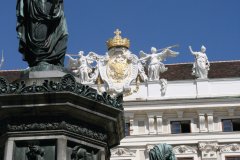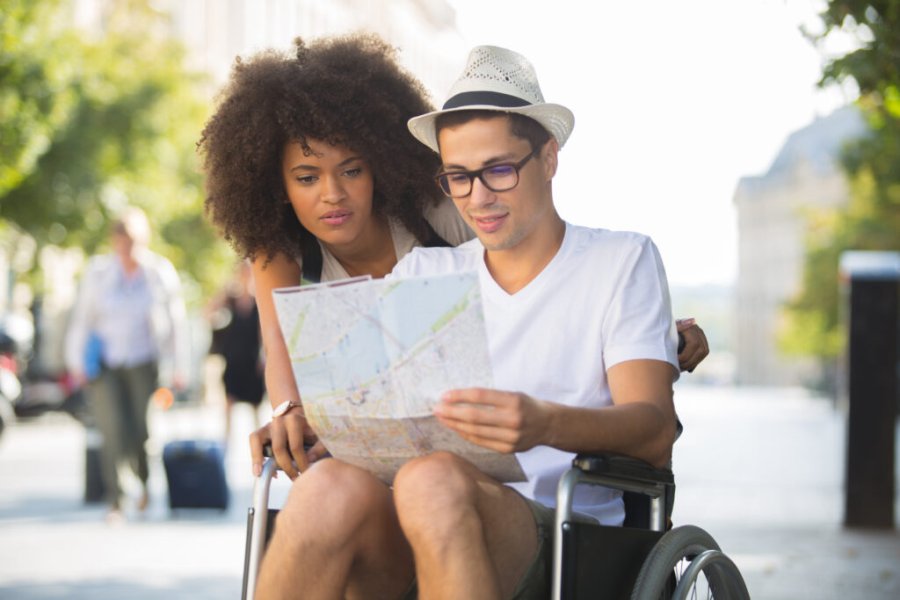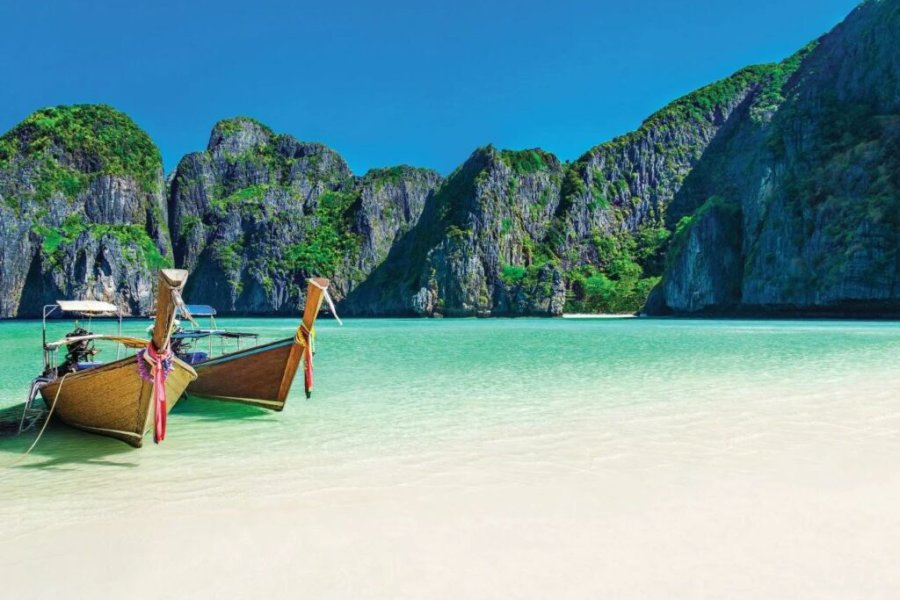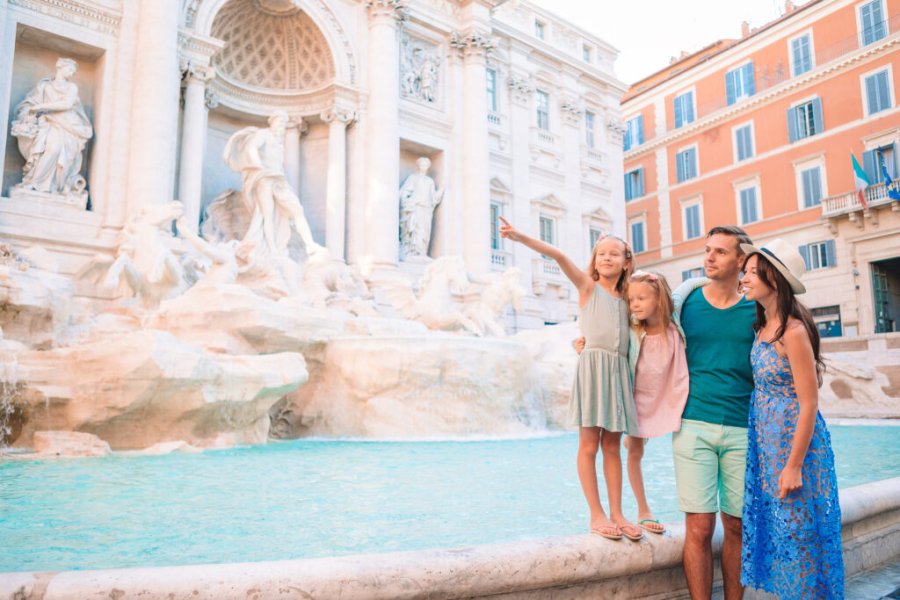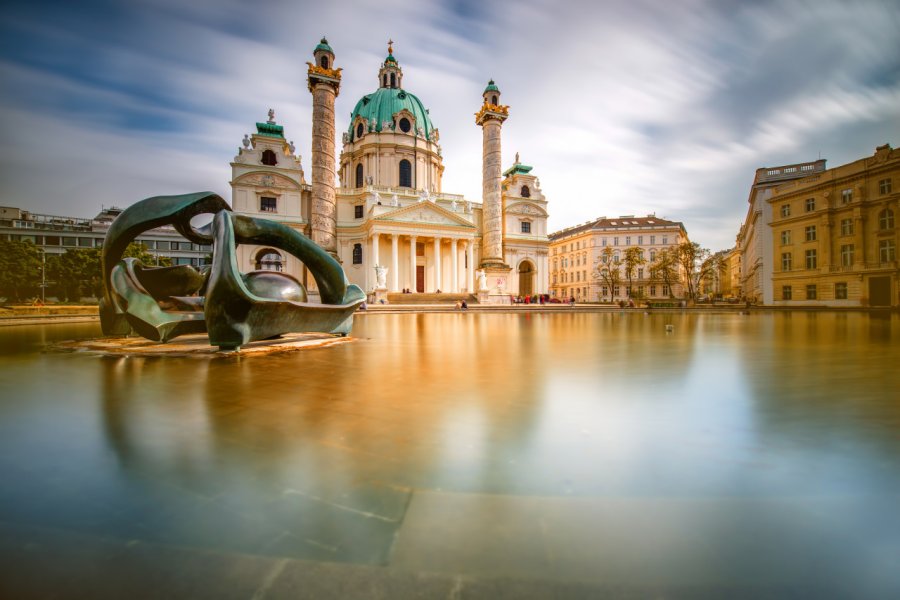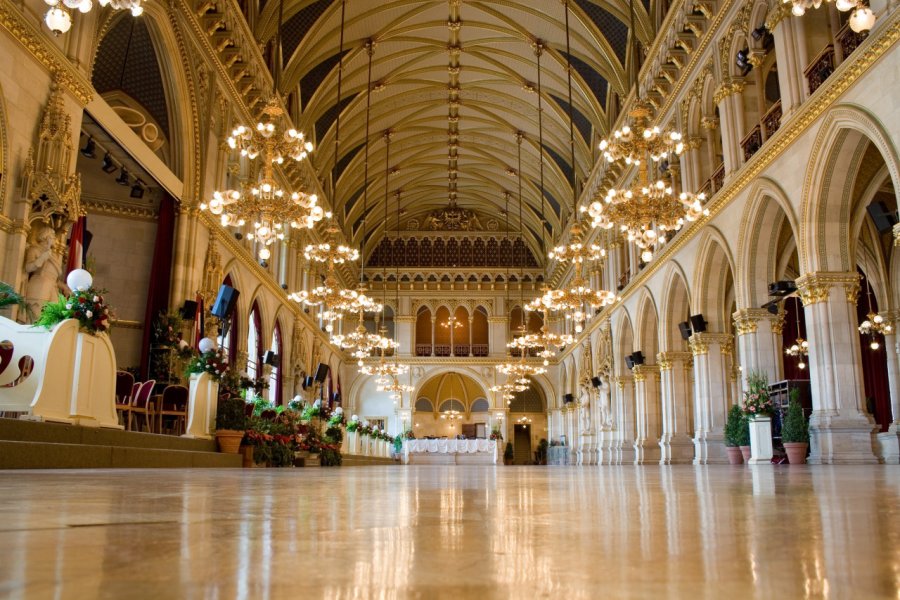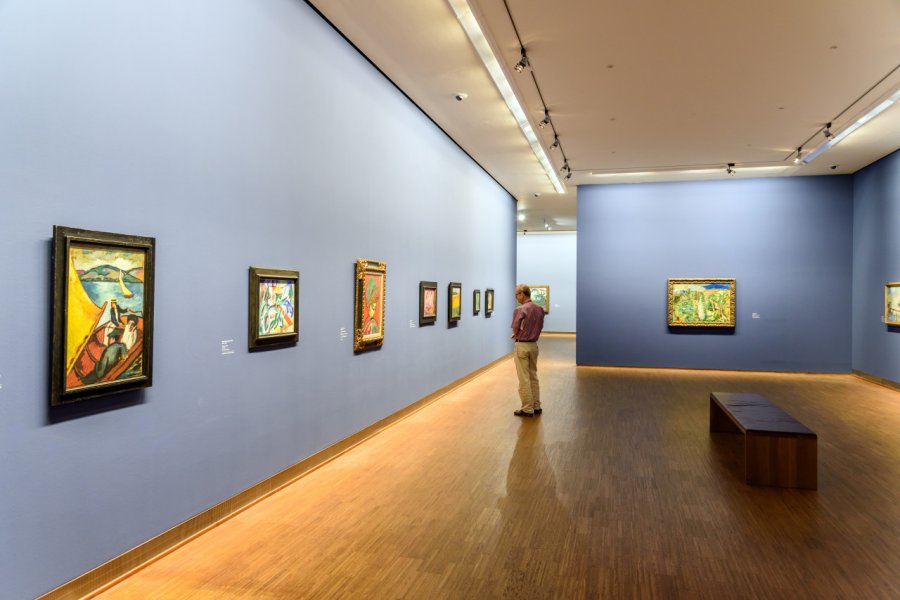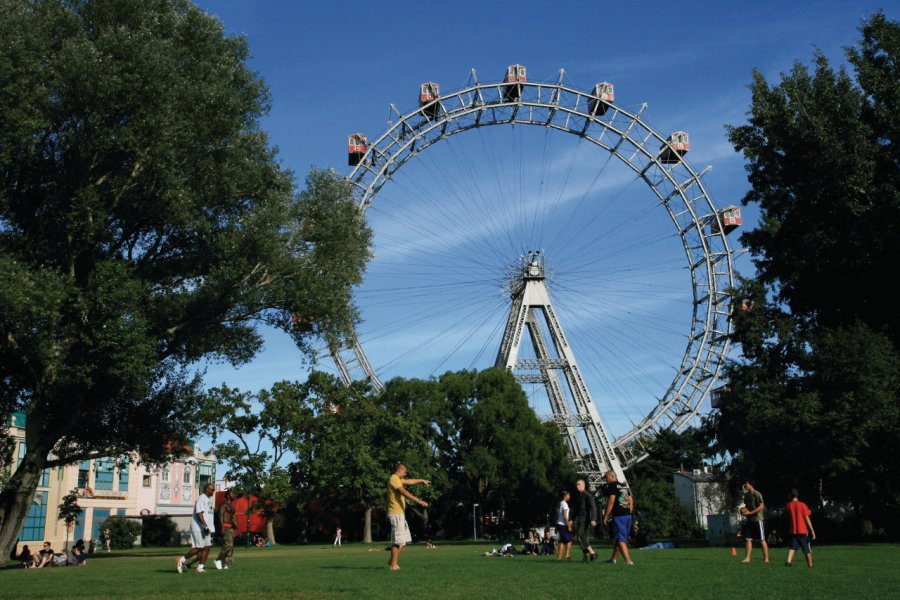Travel guide Vienna
Between a rich past and a rich present, Vienna alone synthesizes multiple currents. Its strategic location on the banks of the Danube, its turbulent history and its position on the eastern edge of Europe make it a city with a unique atmosphere. The old town of the Austrian capital still marks the cultural melting pot of the capital and dazzles with its imperial splendour. St. Stephen's Cathedral, the Hofburg, the many Baroque churches and the multi-centenary cafés betray an exceptional past. Along the Ring, palaces and monuments thread like pearls on a necklace: the National Opera, Musikverein, the Museum of Fine Arts, and luxury hotels are all places to admire. Beyond that are the Bobo districts of Neubau and Mariahilf, the residential districts of Josefstadt and Wieden, the former Jewish district of Leopoldstadt. While Viennese people pay daily tribute to their glorious past by continuing to frequent cafés and enjoy legendary pastries, they are well anchored in their present. The city is full of contemporary art projects, trendy shops and iconoclastic boxes. And to relax and go green, a tram ride is all it takes to reach the heights of the city and the Heuriger, where you can enjoy the new wine in the middle of the vineyards. Vienna has many facets that deserve more than a weekend to explore, so follow in the footsteps of Mozart, Zweig, Strauss, Freud, Klimt....
What to see, what to do Vienna?
-
Book an activity
-
Customized travel
- Addresses to visit Vienna
When to go Vienna ?
To go to Vienna, the seasons do not count... If the end of autumn is sometimes a little gloomy, the Christmas period is surely one of the most typical with its many Christmas markets, their wooden stands and the eternal mulled wine shops to resist temperatures below 0 °C. Spring is, after the Christmas and New Year's holidays, the season with the highest tourist numbers (especially from April to June), but at this time of year, the weather remains unpredictable. In summer, during school holidays, Vienna empties of its inhabitants. The climate is beautiful, the heat is still quite bearable and the city is open to you for bike rides or walks. Hotel rates are lower, and the general atmosphere is more relaxed. The lowest tourist periods then correspond to the months of January (after the holidays), February, October and November. Attractive discounts are then available in most hotels. But be careful, they can be offset by a congress or an important event. During the summer, July and August, hotel rates are acceptable.
Weather at the moment
Suggested addresses Vienna
Travel Vienna
-
Find a hotel
-
Car Rental
-
International e-SIM package
-
Find a local agency
Find unique Stay Offers with our Partners
How to go Vienna
How to go alone
It is very easy to travel alone in Vienna. Public transport and hotels are abundant, so you can make your choice. To avoid wasting too much time queuing in front of each monument, think about buying your tickets in advance on the Internet or on the spot the day before. You can also save time by buying tickets for a few extra euros.
How to go on a tour
"Vienna in the footsteps of Sissi", "Romantic Vienna", "Vienna, capital of music": tourism professionals organize many short stays in Vienna. You will also be offered combinations with Salzburg or with other Central European capitals (Budapest, Prague). Finally, you can opt for a cruise on the Danube.
How to get around
It would be useless and expensive to take a car inside Vienna. All the tourist places, even the most remote ones, are accessible by bus or subway. There are offers for a few days or for a week. For the Vienna Outskirts, the main attractions are accessible by public transport.
Featured articles Vienna
Discover Vienna
A green city, one of the world's most liveable cities and a major tourist destination, Vienna is a jewel. The city center boasts Baroque palaces, Gothic edifices, Art Nouveau buildings and grandiose squares with statues of emperors and musicians, evoking the city's rich history. Other futuristic monuments stand in the heart of the business district or the fantastic MuseumsQuartier. Vienna is also innovating with new eco-districts. You'll appreciate the excellence and variety of the cultural program and the wealth of museums where you can admire works by Bruegel as well as Andy Warhol. You can also follow in the footsteps of Freud or Hundertwasser, to name but two inspiring Viennese artists. Art of living? The art of Viennese cafés, of course! And the pleasure of hiking in the forest, discovering the vineyards, strolling on the Danube island, not forgetting going out and feasting.
Pictures and images Vienna
The 12 keywords Vienna
1. #Bees
In 1769, Empress Maria Theresa founded the world's first beekeeping school in Vienna, and it was a Viennese, Karl von Frisch (1886-1982), who deciphered the dance of the bees. Orchestrated by 700 beekeepers, bees buzz and dance in Vienna by the millions, from public gardens to the rooftops of the Opera House and the Museum of Fine Arts.
2. #Bals

More than 400 receptions enliven the ball season in Vienna, from New Year's Eve to Carnival. Every guild has its own. Men in tails, women in long dresses, tradition resists modernity. After the majestic opening waltz, people dance and drink into the wee hours of the morning, with dignity, to the music of Strauss and others.
3. #Fine arts
This is one of Vienna's attractions. The wealth of collections in its art museums attracts enthusiasts from all over the world. The Museum of Fine Arts alone justifies a trip to Vienna. It boasts the world's finest collection of Bruegel, as well as works by Titian, Tintoretto, Caravaggio, Veronese, Dürer, Rubens, Van Dyck and others.
4. #Beisl
This is the typical, friendly Viennese tavern. You can eat here at an affordable price, especially at lunchtime, with simple, hearty and calorific cuisine. Old-fashioned decor, star schnitzel and a table reserved for regulars. It's certainly not nouvelle cuisine allégée, but it's a Viennese must.
5. #Coffee

Stylish service, an extensive coffee list, a range of pastries from strudel to sachertorte, a selection of newspapers, elegant decor, reserved tables... Viennese coffee is savoir-faire. In fact, the bistro chair (Thonet) is Viennese. Since 2011, Viennese café culture has been listed as an intangible cultural heritage by UNESCO.
6. #Danube
Indissociable from Vienna's charm, the canals that surround the city center form a popular island. On the menu: swimming, boating, strolling, running, cycling, horseback riding... Wild (nature reserve) or civilized (beaches, dance halls), artistic (frescoes and graffiti), the Danube hosts a gigantic open-air music festival on its island.
7. #Ecology
Surrounded by forests and vineyards, with large parks and wild riverbanks, this green city, managed by a municipality committed to the environment, is rich in biodiversity and eco-friendly initiatives: bike paths and lanes being pedestrianized, green walls and electric buses, organic markets and sustainable fashion, new green neighborhoods...
8. #LGBTQ
Emperors, warlords, princesses and gay composers led the way. Today, a thriving LGBTQ scene makes Vienna a particularly tolerant and popular destination. A guided tour with a drag queen, LGBTQ Vienna balls, cafés, restaurants, events, shopping, gay-friendly hotels... even a wedding.
9. #Music
The statues in its parks, the names of its streets, the richness of its musical program and its university all bear witness to the fact that Vienna has a special relationship with the music of which it claims to be the world capital. The music of Mozart, Strauss and Beethoven, operas and waltzes, but also modern music: jazz, pop and electro.
10. #Secession
This dazzling and flourishing artistic movement developed in Vienna between 1889 and 1906 around painters such as Gustav Klimt, and architects such as Joseph Hoffmann and Otto Wagner, as part of the European Art Nouveau movement. Discover the wealth of Viennese painting, architecture, tableware and furniture...
11. #Vineyard
A vineyard in the city? Vienne is unique in this respect! 700 ha of vineyards mark its landscape and gastronomy. The wines are 80% white, and Gemischter Satz is a local specialty. Tasting in the Heuriger (inns) on the estates, with typical dishes. Since 2019, this tradition has been listed as a Unesco intangible heritage site.
12. #Wiener Schnitzel

Always XXL, the "Viennese schnitzel", cousin of the Milanese, is served with potato salad and pink onion. The real Schnitzel is made from veal, not pork. It is said that in 1848, Field Marshal Radetzky, on his return from Italy, entrusted the court cook with this exotic recipe, which was to become emblematic of Austrian cuisine.
You are from here, if...
You love the Danube in all seasons, for jogging, picnicking, swimming, paddling...
You use your bike rather than public transport.
You go out in the evenings on sunny days to enjoy a glass of wine on a terrace with friends or family.
You dine out from 6pm.
You like to eat, or even cook, a schnitzel.
You're a passionate advocate of your favorite ice cream parlors, sausage stands, beisl and heurigen.
You go to balls and the opera, dressed to the nines, several times a year.
You're a model pedestrian who stays in the dedicated lanes, crosses in the right lane and never runs a red light, even without a car in sight.
You know how to order a coffee from the long list of Viennese cafés.
You appreciate classical music, fine art and the cultural avant-garde.
You like to meet up with family or friends for brunch on a Viennese rooftop .
You love Vienna more than any other city in the world.

